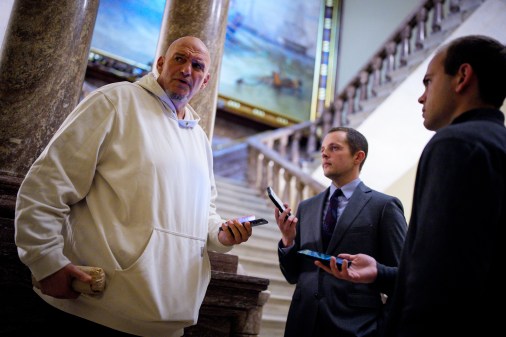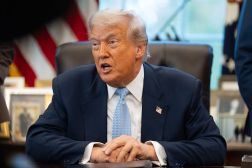2020 in review: AI and quantum see more White House attention

The Trump administration prioritized doubling federal spending on artificial intelligence and quantum information science (QIS) research and development in 2020, while also issuing a series of policies aimed at outcompeting China.
Trump’s fiscal 2021 budget proposal floated increasing AI R&D funding from $973 million to $2 billion by 2022 and quantum spending to $860 million within two years, even while reducing total federal R&D spending by $13.8 billion.
The White House Office of Science and Technology Policy called AI and quantum “industries of the future” and even joined the Global Partnership on AI with other G-7 countries — despite President Trump eschewing most international agreements — in opposition to China.
“AI is being twisted by authoritarian regimes to violate rights,” Michael Kratsios, U.S. chief technology officer, wrote in a Wall Street Journal op-ed in May. “The Chinese Communist Party is reportedly using AI to uncover and punish those who criticize the regime’s pandemic response and to institute a type of coronavirus social-credit score — assigning people color codes to determine who is free to go out and who will be forced into quarantine.”
The White House established seven AI research institutes under the National Science Foundation and five QIS research centers under the Department of Energy in August, with the $1.2 billion authorized in the National Quantum Initiative Act of 2018.
NSF ultimately announced eight AI Institutes the following month, with private industry providing $160 million toward their creation.
“Each one of these is a significant activity in its own right to catalyze education, to create a future AI-ready workforce and also to be nexus points for growing new partnerships,” said James Donlon, program director at NSF, in an interview.
NSF requested about $875 million for AI R&D in 2021, but a spokesperson said it hasn’t yet calculated actual funding totals because the omnibus spending package that funds government through September only just passed Sunday.
The U.S. entered into several bilateral AI research agreements with allies like the U.K., and in October the White House named 20 critical and emerging technologies agencies need to promote and protect. Prior to the strategy’s release, agencies had prioritized such technologies individually.
AI and QIS both made the list along with 5G, semiconductors and space technologies.
“It articulates the areas viewed as the most strategically important and provides a guiding approach for the rest of the federal government, the U.S. research and innovation community, and our allies around the world as we promote and protect our technology advantage,” said a senior administration official at the time.
The Government Accountability Office continues work on an AI oversight framework for continuously monitoring agencies’ progress adopting the technology. Explainability and transparency, bias and fairness, integrity and resilience, and data quality and lineage will all be taken into account.
“Practical” principles are needed beyond “do no harm,” said Taka Ariga, chief data scientist at GAO, in November.
To that end, the National Institute of Standards and Technology plans to issue a series of foundational documents on trustworthy AI. Guidance on AI vulnerabilities is coming in 2021, but first, the agency needs more time to understand the dangers of bias within data and algorithms and how to measure it.
“While we understand the urgency, we want to take time to make sure that we build the needed scientific foundations,” Elham Tabassi, chief of staff at NIST’s Information Technology Laboratory, said in November. “Otherwise developing standards too soon can hinder AI innovations that allow for evaluations and conformity assessment programs.”
Trump signed an executive order earlier in December for the first time providing civilian agencies with nine principles and a policy process for implementing trustworthy AI. The principles borrow heavily from those already established by the defense and intelligence communities.
The Office of Management and Budget issued an overdue memo in November directing agencies on how to regulate AI applications produced for the U.S. market without stifling innovation.
“Through this memorandum, the United States is taking the lead to set the regulatory rules of the road for artificial intelligence,” Kratsios said at the time. “The U.S. approach will strengthen the nation’s AI global leadership and promote trustworthy AI technologies that protect the privacy, security, and civil liberties of all Americans.”






